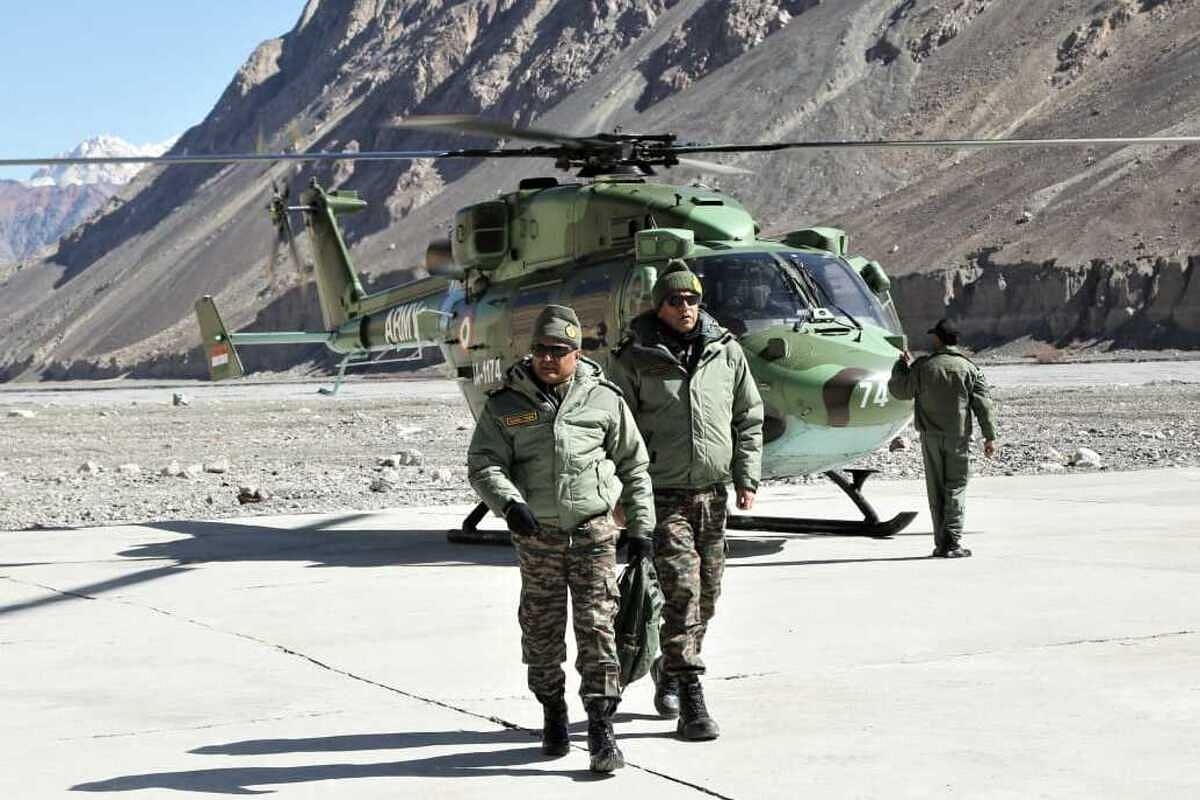News Brief
Days After Tawang Clash, 17th Round Of India-China Commander-Level Talks On Border Tensions Ends Without Agreement

General Manoj Pande in Ladakh. (ADGPI-Indian Army/Twitter)
The 17th round of India-China Corps-Commander level talks ended without an agreement on resolving "remaining issues" along the Line of Actual Control in Eastern Ladakh.
The meeting was held on 20 December at the Chushul-Moldo border meeting point just south of Pangong Lake.
The two sides "had a frank and in-depth discussion, keeping in line with the guidance provided by the State Leaders to work for the resolution of the remaining issues at the earliest," the statement issued by India said.
Indian and Chinese forces have already disengaged from the five friction points that emerged in eastern Ladakh in May 2020.
However, progress has yet to be made in Depsang in northeastern Ladakh and Demchok in the southeastern part of the union territory.
The disagreements between India and China at the two locations emerged before the ongoing standoff in eastern Ladakh began. These have been termed "legacy issues" by the Indian Army.
The 17th round of talks between India and China occurred just days after the clashes in Arunachal Pradesh's Tawang.
Indian and Chinese forces clashed in the Yangtse area of Tawang on 9 December. The clashes occurred after the People's Liberation Army attempted to take control of a tactically important peak in the area, which gives a commandeering view of the territory on both sides of the LAC.
A numerically larger Indian force managed to repel the Chinese forces attempting to intrude into Indian territory and detained a number of Chinese soldiers during the ensuing clashes.
Chinese soldiers were chased back to their post across the LAC, reports said, adding that some Chinese soldiers left their equipment behind.
Support Swarajya's 50 Ground Reports Project & Sponsor A Story
Every general election Swarajya does a 50 ground reports project.
Aimed only at serious readers and those who appreciate the nuances of political undercurrents, the project provides a sense of India's electoral landscape. As you know, these reports are produced after considerable investment of travel, time and effort on the ground.
This time too we've kicked off the project in style and have covered over 30 constituencies already. If you're someone who appreciates such work and have enjoyed our coverage please consider sponsoring a ground report for just Rs 2999 to Rs 19,999 - it goes a long way in helping us produce more quality reportage.
You can also back this project by becoming a subscriber for as little as Rs 999 - so do click on this links and choose a plan that suits you and back us.
Click below to contribute.
Latest